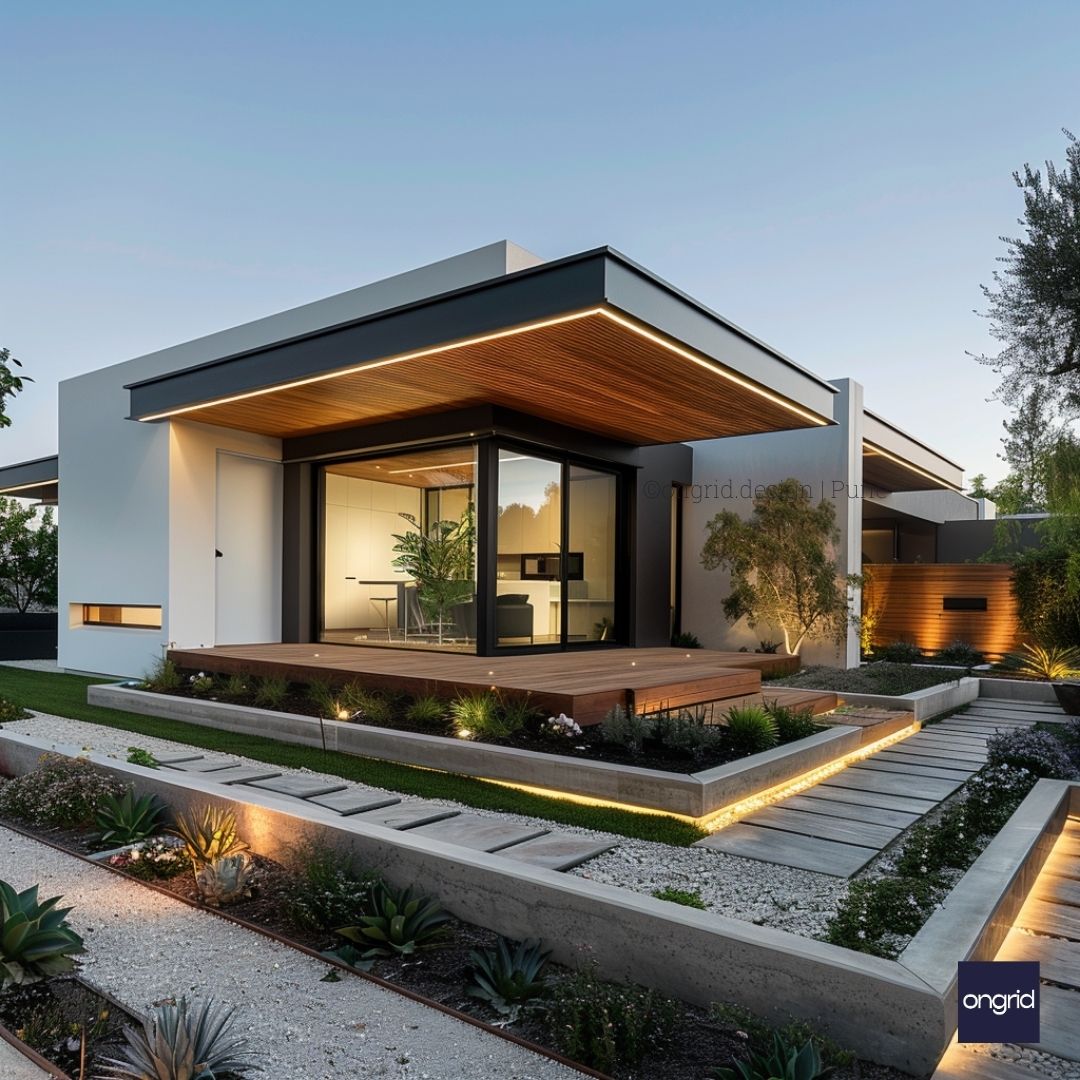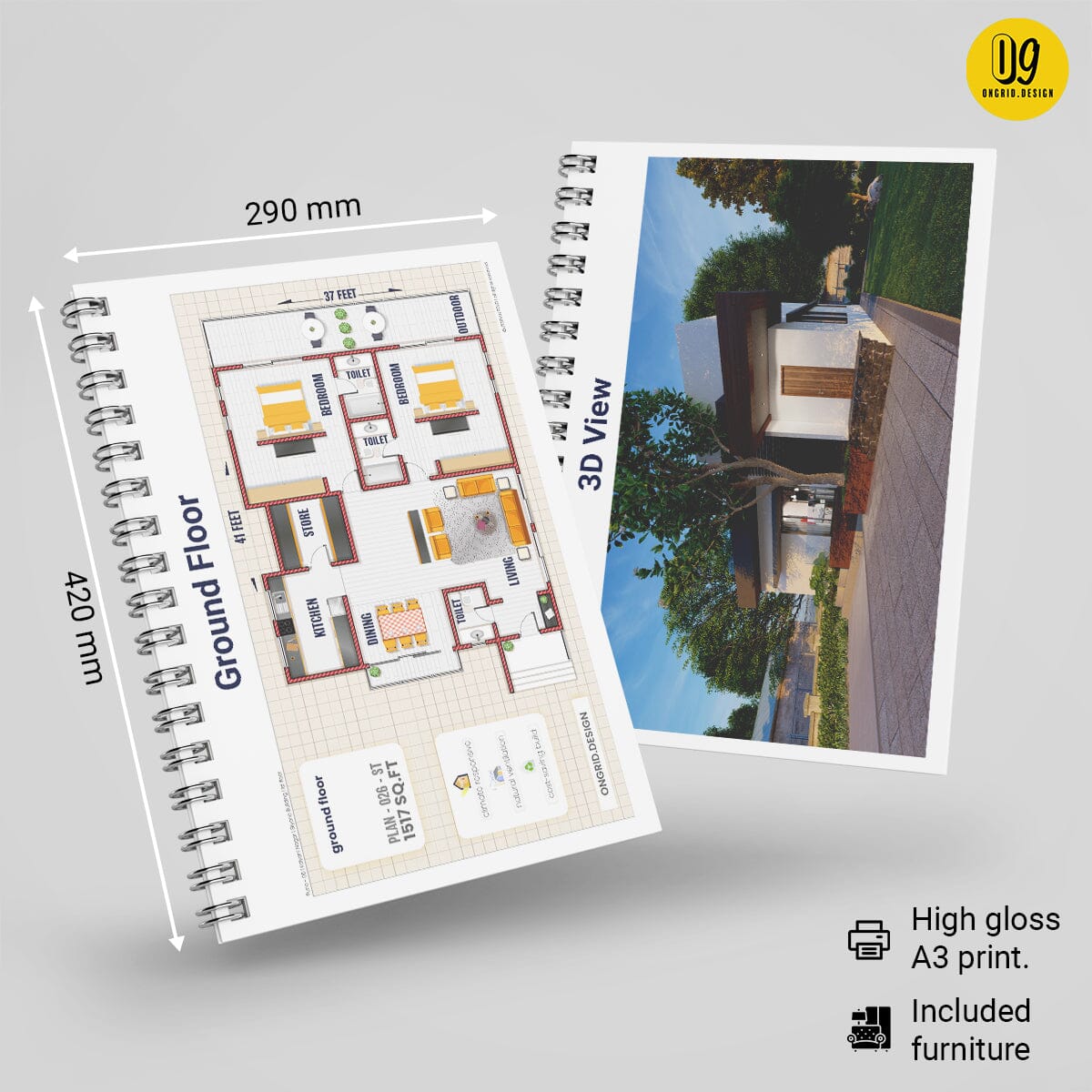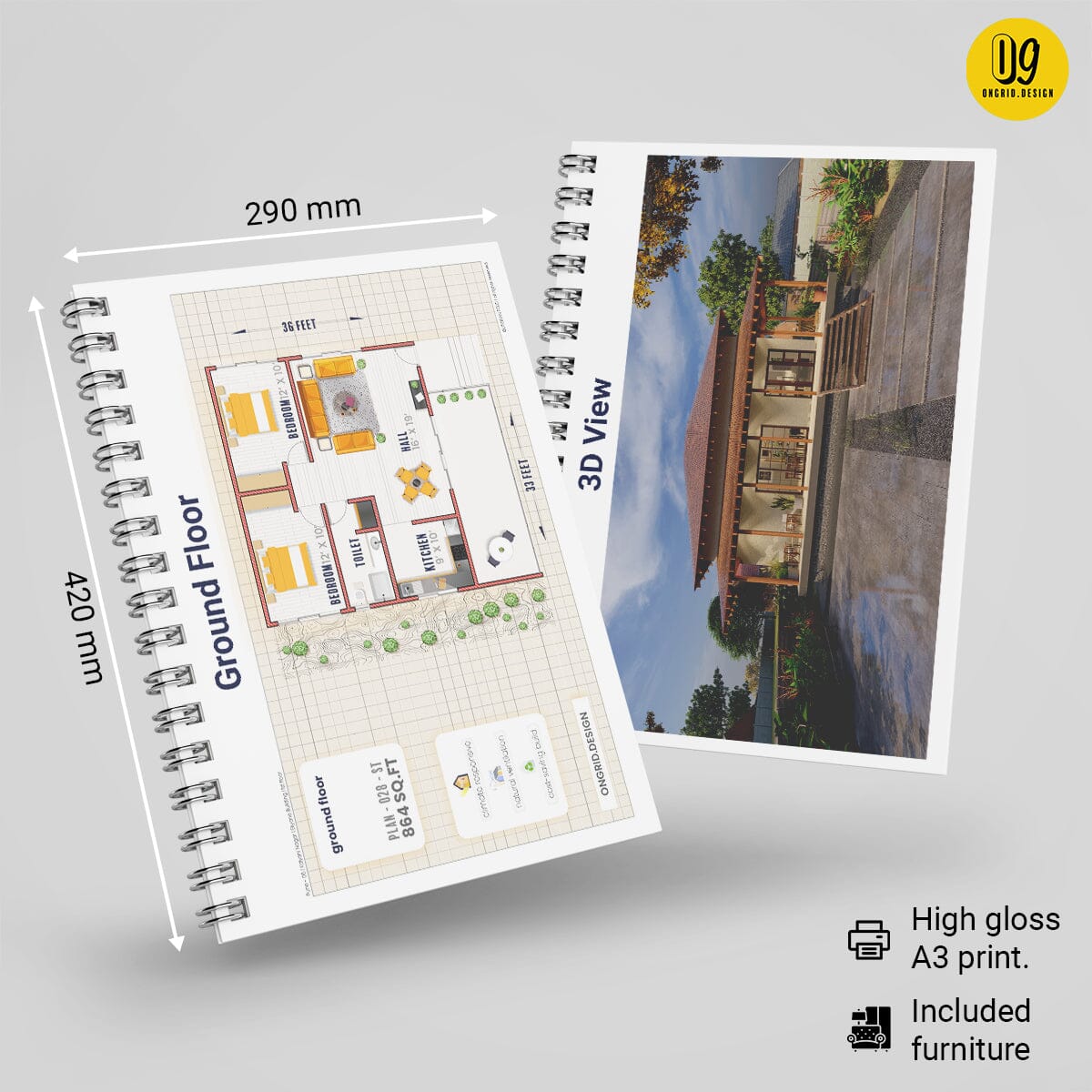7 Reasons to Design a Single Floor House | Advantages
Single Floor House designs have often been misunderstood by homeowners and often termed as low budget single floor homes. We shall explore if the term holds any merit, advantages, and disadvantages while building your home as a single floor house.
 7 Ways to decide if Single Floor design homes are the right choice for you.
7 Ways to decide if Single Floor design homes are the right choice for you.
Planning and Design: The challenge is to make the entire house functional and meet families' needs to arrange all the relevant rooms and spaces with appropriate sizing and accessibility.
A single floor house needs to focus on easy circulation. That is how each room opens into another. However, it might feel simple but think of an example where one toilet door opens straight in front of the dinning. Certainly something we can avoid.

Plinth and Roof: You must understand your local geography and climate. If your land or plot is on a gradual slope that is lower than the adjoining road, consider a higher plinth. ( Plinth is a the height of the ground floor slab ) Regions that experience intense monsoons should, at a minimum, have 600mm height on the plinth above the ground floor.
A flat roof in an area that experiences hot summers may cause your electric bills to go up due to the additional cooling requirements. You can use strategies like pseudo flooring with filler materials or paint the floor with white reflective paint. It has proven to help reduce the temperature by at least 3+ Degrees Celsius.

Surrounding Buildings: If your land or plot is surrounded by old buildings, at least two-storey high from all sides. It might cause your privacy concerns as it is easy to peak over the house. If such is the case, incorporate more prominent projections in the elevations to break the sightlines.
Ease of Use: Single floor houses are easy to move and grow old in, as they eliminate stairs and spaces are close together. People often spend additional expenses upwards of 12 Lakhs fitting in a domestic elevator to meet their ageing needs.


Budget or Expensive: Making a house demands far more than just furniture planning and building walls and slabs. A significant portion of the cost is incurred in fitting a newly built home with electrical, plumbing and drainage fixtures.
Irrespective of your desire of lifestyle and choice of expense, building and maintaining a single floor house is cheaper than a double-storey house. However, single floor houses in India has seen more demand in Tier 2 cities or Rural belts. We analyse the biggest reason is such trend is the availability of land and cost of living.
Single Floor House Plans in Cities: We saw the trend fade in the late 80s when cities relaxed the FSI regulations, and people opted to build a duplex and higher storey buildings.
We only recommend Single Floor House Plans for homeowners with ample land area left beyond the built of their house to develop Gardens, Play Area and overall incorporate activities. Avoid single floor plan houses if the surrounding is crowded with tall buildings.


Locations with famous Designs in Single Floor Homes: In India, Costal zones prefer single floor houses because they are prone to cyclonic conditions and torrential rainfall. Kerala Homes are famous for their sloped roofs and central courtyards. People looking to build farmhouses to relax, opt for these designs to offer great comfort and are aesthetically pleasing.
We hope you learnt a little more about building beautiful single floor homes. Share this with your friends and family that can benefit from understanding the fundamental on single storey home designs. There are plenty more articles, design inspirations on our website regarding Home Plans and Home Designs in India.
#singlefloorhousedesign #lowbudgetsinglefloorhousedesign #singlefloorhousefrontdesign3d #singlefloorhousefrontelevationdesign
#singlefloorhousedesignIndia
Other Articles that may interest you :
- Checklist to build a house in India
- How to decide on a good Layout for your home?
- 25 Common terms
- Building Codes Regulation
Ongrid.Design aims to provide you with real and verified data. That’s why we conduct our research and obtain direct, personal insight. Analyses and graphics in this article are based on authentic sources cross-validated by our in-house experts.
We take great care to ensure the information we publish is reliable and accurate—however, Ongrid.Design takes no responsibility for inaccuracy in information supplied to us by users, research participants, or other entities.
Please note the insight contained within this article is for general information purposes only. We’re glad to answer any questions you may have about this article and its supporting research. For further information, please contact Ongrid.Design Expert directly via email at hello@ongrid.studio.











Leave a comment